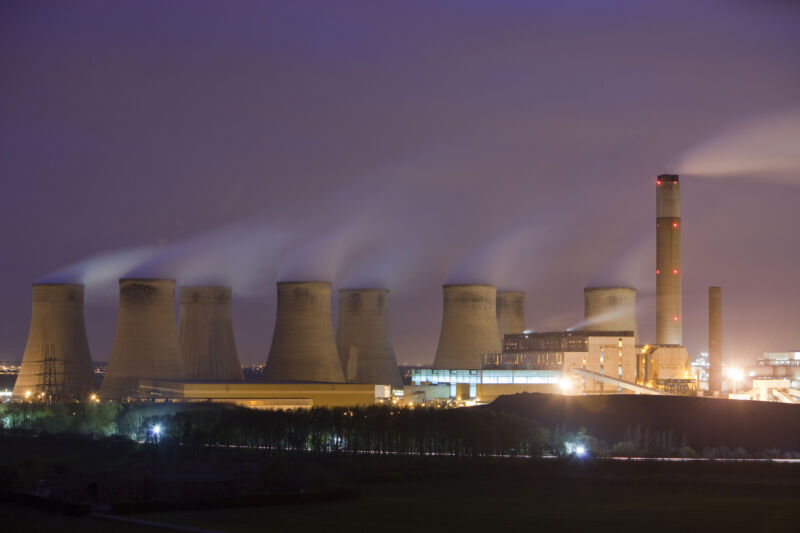
Enlarge / The Ratcliffe-on-Soar plant is set to shut down for good today. (credit: Ashley Cooper)
On Monday, the UK will see the closure of its last operational coal power plant, Ratcliffe-on-Soar, which has been operating since 1968. The closure of the plant, which had a capacity of 2,000 Megawatts, will bring an end to a history of the country’s coal use, which started with the opening of the first coal-fired power station in 1882. Coal played a central part in the UK’s power system in the interim, in some years providing over 90 percent of its total electricity.
But a number of factors combined to place coal in a long-term decline: the growth of natural gas-powered plants and renewables, pollution controls, carbon pricing, and a government goal to hit net-zero greenhouse gas emissions by 2050.
From boom to bust
It’s difficult to overstate the importance of coal to the UK grid. It was providing over 90 percent of the UK’s electricity as recently as 1956. And the total amount of power generated continued to climb well after that, reaching a peak of 212 Terawatt hours of production by 1980. And the construction of new coal plants was under consideration as recently as the late 2000s. And, according to the organization Carbon Brief’s excellent timeline of coal use in the UK, continuing the use of coal with carbon capture was given consideration.




















+ There are no comments
Add yours